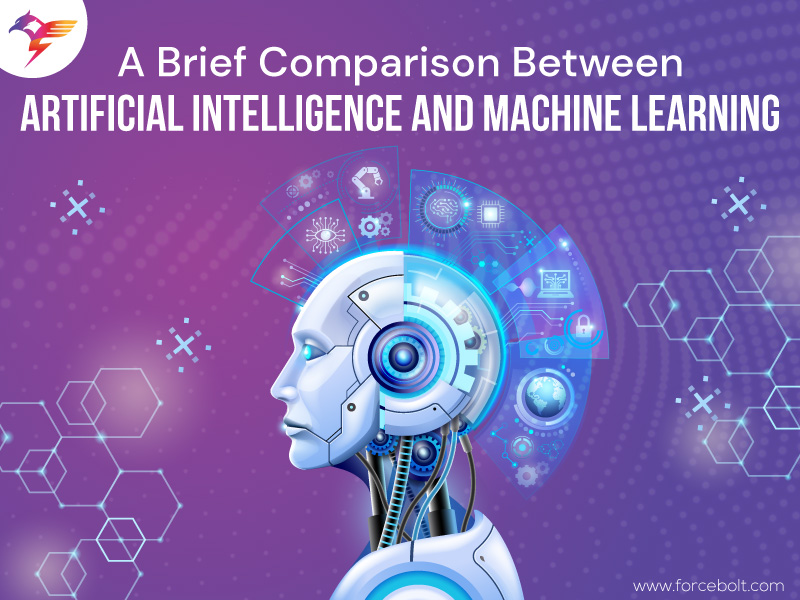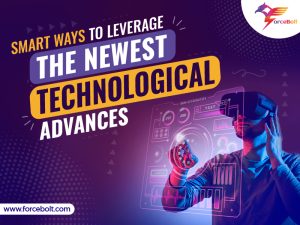Sharing is caring!
Machine learning and Artificial intelligence are two key terms that most people use interchangeably. Even though machine learning is an element of artificial intelligence, these two phrases refer to two separate concepts. Machine learning is only a minor component of artificial intelligence, a field of study for any full stack development company.
Their diverse set of applications has transformed technology in various fields, including healthcare, manufacturing, business, education, banking, information technology, and more!
We’ll look at these buzzwords and see what the differences are in this article.
What Is Machine Learning?
The main agenda of machine learning (ML) is to extract knowledge from data. Machine learning allows a computer system to generate predictions or make decisions based on historical data without being explicitly coded.
ML can be used to address complex problems like detecting credit card fraud, enabling self-driving automobiles, and detecting and recognizing faces. To deliver consistent outcomes, the machines learn from the past. To forecast rational outcomes, ML algorithms employ Computer Science and Statistics.
Machine Learning can be segmented into 3 types:
1. Supervised Learning
In supervised learning, the system is given training datasets. Then, the data is analyzed using supervised learning algorithms, which produce an inferred function. The right solution obtained in this way can be used to map new cases. For example, one use of the Supervised Learning method is the identification of credit card fraud.
2. Unsupervised Learning
Unsupervised Learning algorithms are substantially more difficult to implement because the data to be supplied is unclustered rather than in datasets. The idea here is for the machine to learn on its own without any supervision. There is no correct solution to any situation. The algorithm itself discovers the patterns in the data.
3. Reinforcement Learning
This enables software agents and machines to automatically discover the best behavior in a given scenario in order to maximize their performance. Reinforcement learning is characterized by defining a learning problem rather than by defining learning methods. We regard any method that is well adapted to solving the problem to be a reinforcement learning method.
What Is Artificial Learning?
The science of creating intelligent devices, especially intelligent computer programs, is known as artificial intelligence. Artificial intelligence is related to using computers to comprehend human intellect, but AI is not limited to biologically observable methods.
There are 3 types of artificial intelligence:
1. Artificial Narrow Intelligence:
Narrow AI is goal-oriented, built to execute specific tasks – for example, facial recognition, speech recognition/voice assistants, driving a car, or surfing the internet – and is extremely intelligent at fulfilling the task it is taught to do.
2. Artificial General Intelligence:
AGI, also known as strong AI or deep AI, is the concept of a computer with general intelligence that replicates human intelligence and behaviors, learning and applying its intelligence to solve any problem.
3. Artificial Superintelligence:
Artificial superintelligence (ASI) is a hypothetical AI that does more than mimic or understands human intelligence and behavior; ASI is the point at which robots become self-aware and outperform human intelligence and ability.
Last Words
In summary, machine learning searches for patterns based on previous experience. Artificial intelligence learns from understanding how to gain information/skills and how to apply that knowledge in new situations. AI and machine learning (ML) can both be useful in the business world. However, machine learning (ML) is being widely used in many businesses to solve crucial business problems.
Are you looking for the best typescript mobile app development partner for your business? Then, choose ForceBolt, one of the most trusted full-stack development companies that will assist you in developing amazing user experiences.

Abhishek Singh
Full Stack Technical Lead
A highly motivated Senior Full Stack Developer who is self-driven and actively looks for ways to contribute to the team. He possesses rich expertise and deep knowledge about a good software development process that includes documentation, testing, documentation, and collaboration. With solid communications and reasoning skills, he delivers high performance and quality in his projects. He is always open to assist other teams in understanding project requirements so that collaboration can happen in the best possible ways in an environment conducive to the business.













